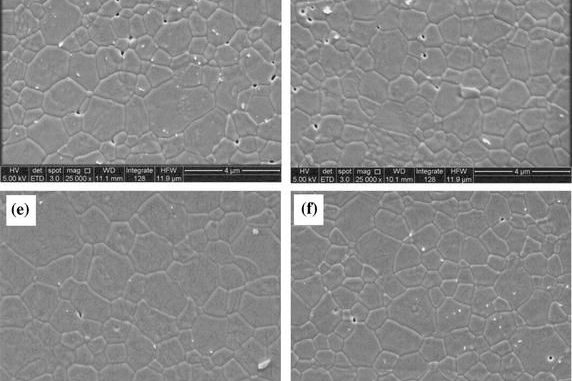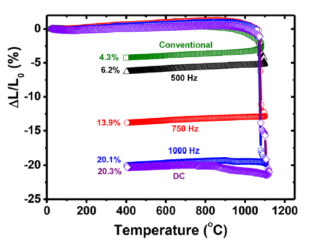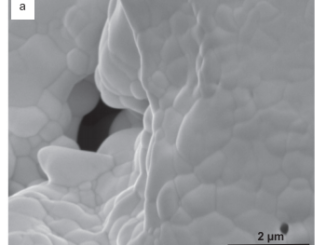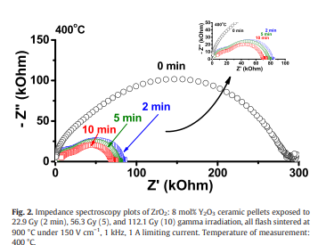
Electric field-assisted pressureless sintering of zirconia–scandia–ceria solid electrolytes
Abstract: Electric field-assisted (flash) pressureless sintering experiments were carried out in ZrO2ceramics doped with 10 mol% Sc2O3 and 1 mol% CeO2 (10Sc1CeSZ). All experiments were conducted isothermally at 1050 °C for 2–5 min with the application of a 100–150 V cm−1 AC electric field at 1 kHz with 1–4 A limiting current in green compacts and in samples pre-sintered at different temperatures. Shrinkage level, structural phases and grain morphology data were collected by dilatometry, X-ray diffraction and scanning electron microscopy analyses, respectively. The results showed that for the same delivered electric power, the final shrinkage was higher for higher temperature applications of the electric field and for higher electric current pulses. Moreover, the higher the porosity, the higher the final densification of the flash-sintered 10Sc1CeSZ samples, showing that pores play a role as a preferential path in the flash sintering mechanism.
Authors:
Journal of Materials Science
DOI: https://doi.org/10.1007/s10853-017-1615-3
PDF: Electric field-assisted pressureless sintering of zirconia–scandia–ceria solid electrolytes




